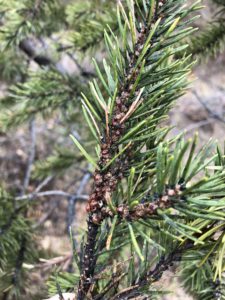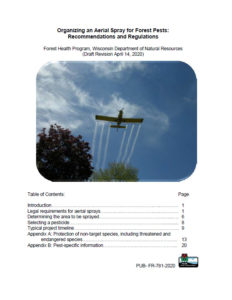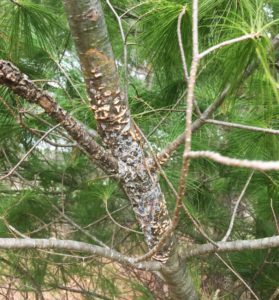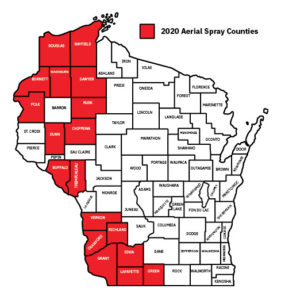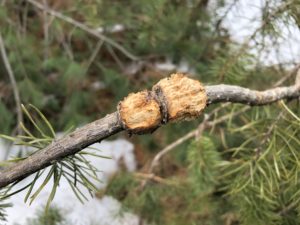By Linda Williams, forest health specialist, Woodruff, Linda.Williams@wisconsin.gov, 920-360-0665
Spruce budworm defoliation is becoming noticeable in northern and central Wisconsin counties as clipped host tree foliage stuck in the caterpillars’ webbing turns rusty red. The caterpillars should pupate soon, and moths will emerge a couple weeks later to mate and lay eggs. Spruce budworm is a native insect with periodic outbreaks that defoliates spruce and balsam fir in the Midwest.
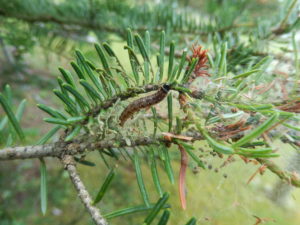
Spruce budworm caterpillar near the silk webbing it spins on branch tips.

